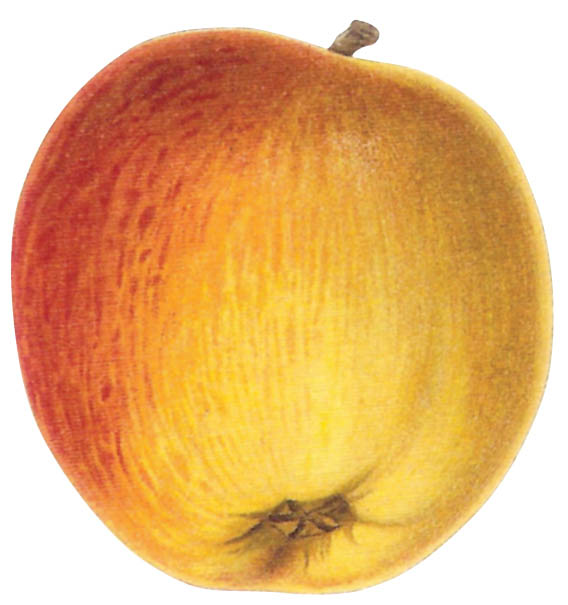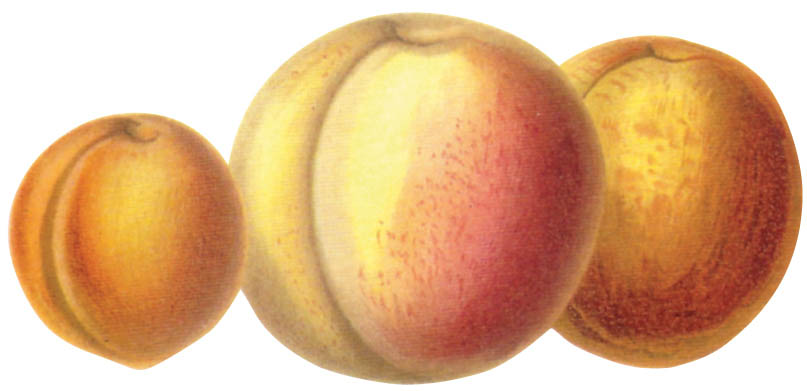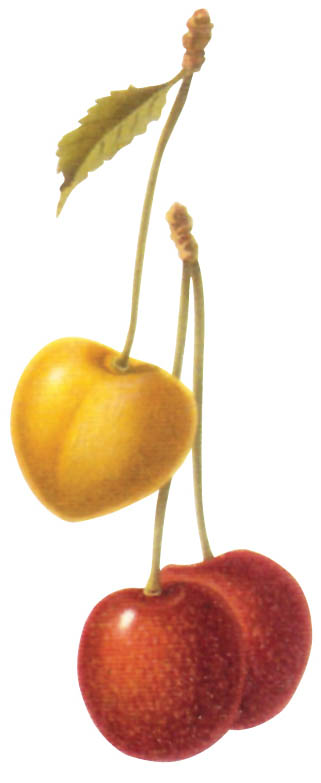Appendix
Advantages and Disadvantages of Commonly Available Rootstocks
This list of rootstocks based on information from Dave Wilson Nursery is not intended to be comprehensive, but rather to indicate the types of issues that rootstocks can address or fail to address. When you are choosing between different rootstocks, the important questions have to do with the conditions in your backyard — climate, soil type, irrigation, and potential for pests and disease. Match the rootstock to your backyard conditions first, and then consider tree size. If a partially dwarfing rootstock matches other criteria, by all means consider it. Just remember that semidwarfing rootstock won’t control size the way you might expect, and root systems that create larger trees also generate healthier and better-anchored trees. Keep trees small with pruning.
Apples
M-7
Pro: Popular, widely adapted to well-drained soils when given adequate water, cold hardy, moderately well anchored, moderate disease resistance, dwarfs to two-thirds of standard size
Con: Susceptible to wooly apple aphid, staking sometimes required, tendency to lean, suckering
M-9
Pro: Tolerates heavy soils, precocious, productive, increases fruit size, dwarfs to less than half of standard size
Con: Shallow rooted, drought sensitive, requires staking, susceptible to fire blight and wooly apple aphid
M-26
Pro: Reasonably cold hardy, precocious, productive, dwarfs to about half of standard size
Con: Not for heavy soils, requires staking, shallow rooted, drought sensitive, susceptible to phytophthora (a root rot disease), fire blight, and wooly apple aphid
M-111
Pro: Excellent all-around rootstock, tolerates both water logging and drought, grows in poor soils and sandy soils, well anchored, good disease resistance, resists wooly apple aphid, somewhat dwarfing
Con: Susceptible to crown rot under very poor conditions
Stone Fruits
Citation
(For apricots, nectarines, peaches, plums)
Pro: Very tolerant of wet soil and irrigated garden situations, winter hardy, induces early bearing, increases size and sugar content of fruit, somewhat dwarfing
Con: Susceptible to crown gall, bacterial canker, oak root fungus, not drought tolerant
Lovell
(For almonds, apricots, nectarines, peaches, plums, prunes)
Pro: More tolerant of wet soils than Nemaguard, productive, increases fruit size
Con: Susceptible to nematodes, crown rot, crown gall, oak root fungus, somewhat susceptible to bacterial canker
Marianna 2624
(For most almonds, apricots, peaches, plums)
Pro: Shallow root system somewhat tolerant of soggy soils, resistant to oak root fungus, slightly dwarfing
Con: Tends to lean, shallow rooted when young, suckers profusely
Myrobalan 29-C
(For most almonds, apricots, plums)
Pro: Good anchorage, adaptable to heavy soils, immune to root-knot nematode, some resistance to oak root fungus
Con: Tends to lean, mild suckering, susceptible to oak root fungus
Nemaguard
(For almonds, apricots, nectarines, plums, prunes)
Pro: Vigorous, resists root-knot nematode, excellent for well-drained soil
Con: Prefers sandy soil, susceptible to root-lesion nematode, oak root fungus
St. Julian “A”
(For plums)
Versatile plum rootstock, excellent for cold areas with fluctuating spring temperatures due to inconsistent spring weather conditions, somewhat dwarfing, preferred over Citation in north coastal mountains and Oregon
Cherries
Colt
Pro: Tolerates wet, heavy soils better than Mahaleb
Con: Drought sensitive, only slight dwarfing if irrigated, susceptible to crown gall, not cold hardy
Mazzard
Pro: More water tolerant than Mahaleb, especially good anchorage, most tolerant of poor and heavy soil, cold hardy, resists root-knot nematode, vigorous, moderately resistant to oak root fungus
Con: Slow to bear, large tree, root suckering
Mahaleb
(Most often used for tart cherries)
Pro: More drought tolerant than Mazzard, somewhat dwarfing
Con: Intolerant of heavy soils and high water tables — provide deep soil with good drainage, attractive to gophers, tends to sucker, susceptible to oak root fungus, some root-knot nematode susceptibility, very susceptible to phytophthora root and crown rot


